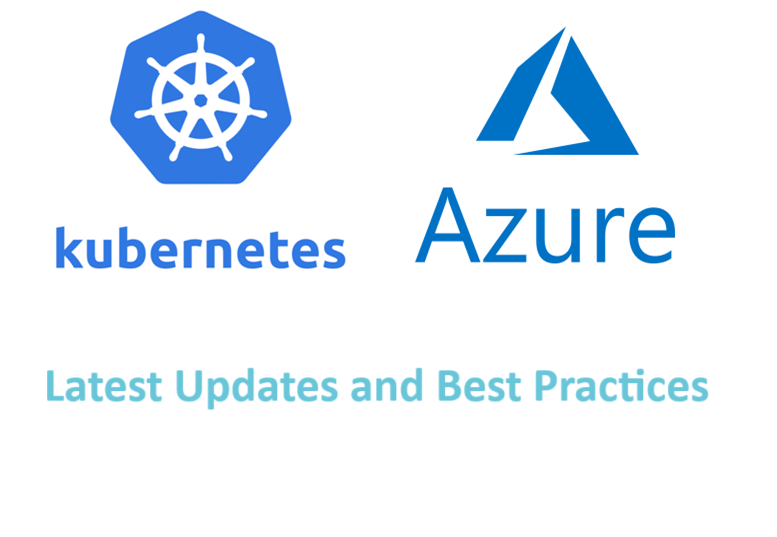Mastering Azure Kubernetes Service (AKS): Latest Updates and Best Practices for Seamless Deployment
 Umesh Pandit
Umesh Pandit
As a working professional in the world of cloud-native applications, I'm constantly impressed by the latest updates of Azure Kubernetes Service (AKS). It has become my go-to platform to deploy and manage containerized applications. All thanks to its scalability, flexibility, and ever-growing feature set. But if you want to harness the power of AKS for real, you must stay updated with the latest features and practices.
Empathizing this, I would like to share some recent AKS updates that have caught my attention. I will also share the best practices you can follow for smooth and efficient deployments of the new features. I'll provide a step-by-step guide using the Azure interface to make the process smooth.
Latest Updates in Azure Kubernetes Service
Microsoft has been diligently enhancing AKS, and some recent updates have truly elevated the platform. For instance, the integration of Azure CNI Powered by Cilium has significantly boosted network performance and security within my clusters. Implementing advanced network policies with ease gives me greater control and peace of mind.
Another update that has caught my attention is the introduction of Confidential Containers. I believe they are a game-changer for security. They let me run sensitive apps with extra protection, keeping my data safe and sound.
Best Practices for Deploying Applications with AKS
While the latest features are exciting, successful AKS deployments hinge on following essential most suitable practices.
One of the first things I learned with AKS is the importance of picking the right "size" for your application. Choosing the right size container for your stuff – too small, and things won't fit. Too big, and you're wasting space (and money!).
AKS makes it easy to adjust the size of your "containers" (we call them virtual machines or VMs) to match what your app actually needs.
And of course, security is always top of mind for me. With AKS, I can control who has access to what, lock down my network to keep the bad guys out and make sure everything is up-to-date with the latest security patches. It's like having a high-tech security system for my apps!
Talking about Azure Monitor is like my app's personal security tracker. It provides real-time insights into how it's performing and alerts me to any potential issues before they become major headaches.
Step-by-Step Guide to Deploying Applications with AKS
Now, let's bring these practices to life with a step-by-step guide on deploying an application using the Azure portal:
Step 1: Login and Find AKS
Go to the Azure portal (that's like your control panel for all things Azure).
Search for "Kubernetes services" and click on "Azure Kubernetes Service."
Step 2: Create Your Cluster (Your App's Home)
Click on "Create a Kubernetes cluster."
Select Subscription type and give your cluster a name and choose a location close to you.
Don't stress too much about the other settings – just stick with the basics for now.
Simply select “Review + Create”. Check the details and hit the “Create” button at the bottom.
- The process will take some time, so be patient.
Step 3: Deploy Your App (Launch Time!)
Once your cluster is ready, look for a section called "Deployments."
Choose to deploy a sample application provided by Azure. It's the quickest way to see things in action.
Follow the easy prompts, and you're good to go!
Monitor and manage your deployment
After deployment, you can monitor your application's health and performance using the Kubernetes dashboard or tools like Azure Monitor.
Explore the monitoring and logging capabilities within AKS to set up alerts and gain insights into your application's behavior.
Conclusion
Mastering AKS involves a continuous learning process, embracing new features, and adhering to best practices. By staying updated and following the steps outlined in this guide, you can leverage the full potential of AKS to build and deploy robust, scalable, and secure cloud-native applications. Remember, this is just the beginning! Dive deeper into AKS documentation and explore its vast ecosystem of tools and resources to further enhance your Kubernetes journey.
Follow Umesh Pandit
https://www.linkedin.com/in/umeshpandit/
https://www.linkedin.com/newsletters/umesh-pandit-s-notes-7038805524523483137/
Subscribe to my newsletter
Read articles from Umesh Pandit directly inside your inbox. Subscribe to the newsletter, and don't miss out.
Written by

Umesh Pandit
Umesh Pandit
🚀 Advisor Solution Architect at DXC Technology | 16+ years of IT Industry Experience 🚀 I am a seasoned Advisor Solution Architect at DXC Technology, a premier global digital transformation solutions provider. With over 16 years of rich experience in the IT industry, I specialize in helping organizations translate their strategic business objectives into tangible realities through innovative and scalable solutions leveraging Microsoft technologies. My expertise spans a wide spectrum of Microsoft offerings including Azure, Dynamics 365 for Finance and Operations, AI, Microsoft 365, Security, Deployment, Migration, and Administration. Additionally, I bring valuable experience in SAP, CRM, Power Platform, and other cloud platforms to the table. Throughout my career, I have spearheaded the successful delivery and support of over 300 projects, consistently adhering to the best practices and standards set by Microsoft and the industry at large. Moreover, I take pride in my role as an educator and mentor, having empowered over 50,000 professionals and students worldwide through training, guidance, and knowledge-sharing initiatives. Passionate about staying at the forefront of emerging technologies, I thrive on continuous learning and am dedicated to fostering a culture of knowledge exchange within the tech community. Let's connect and explore opportunities to drive transformative outcomes together!